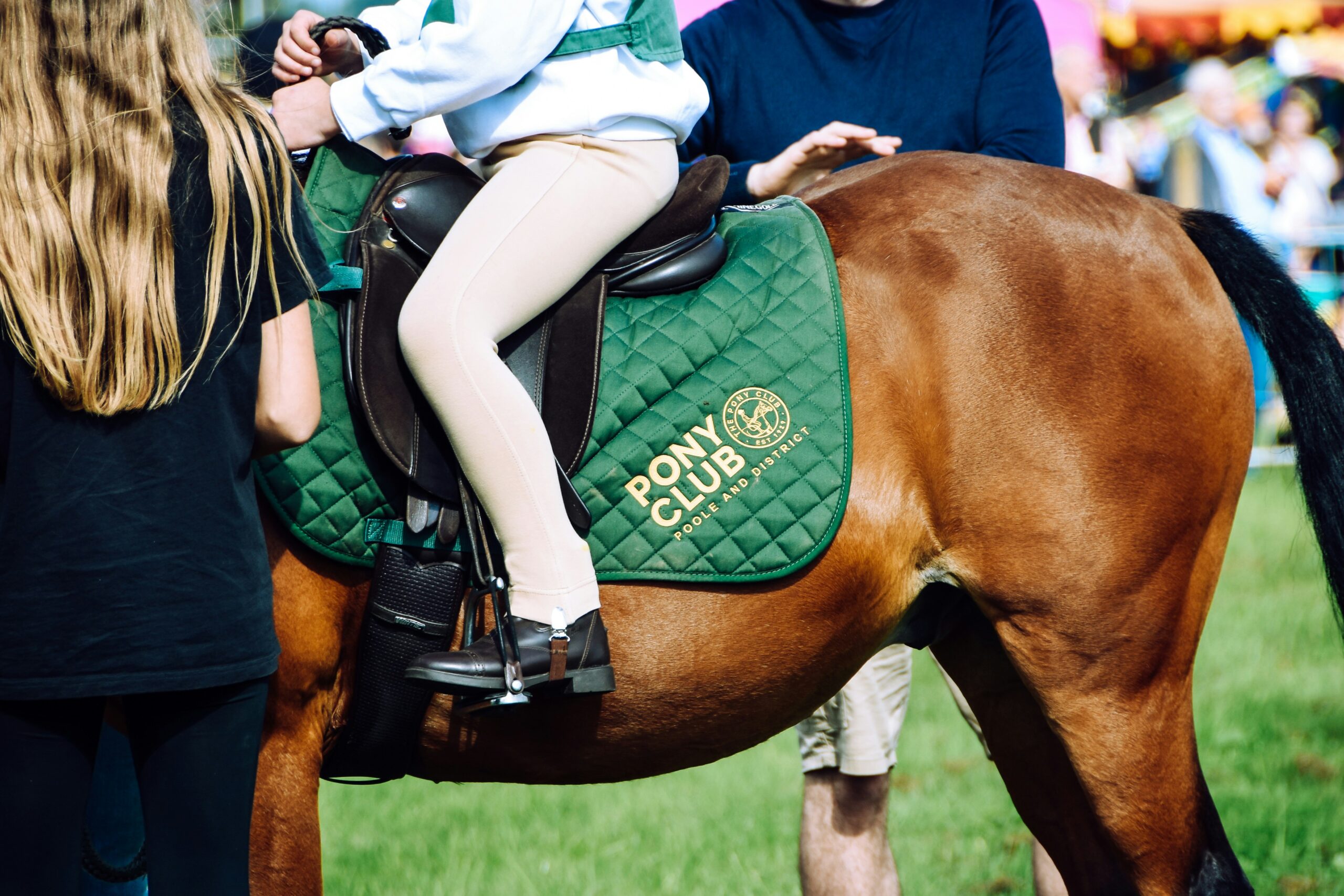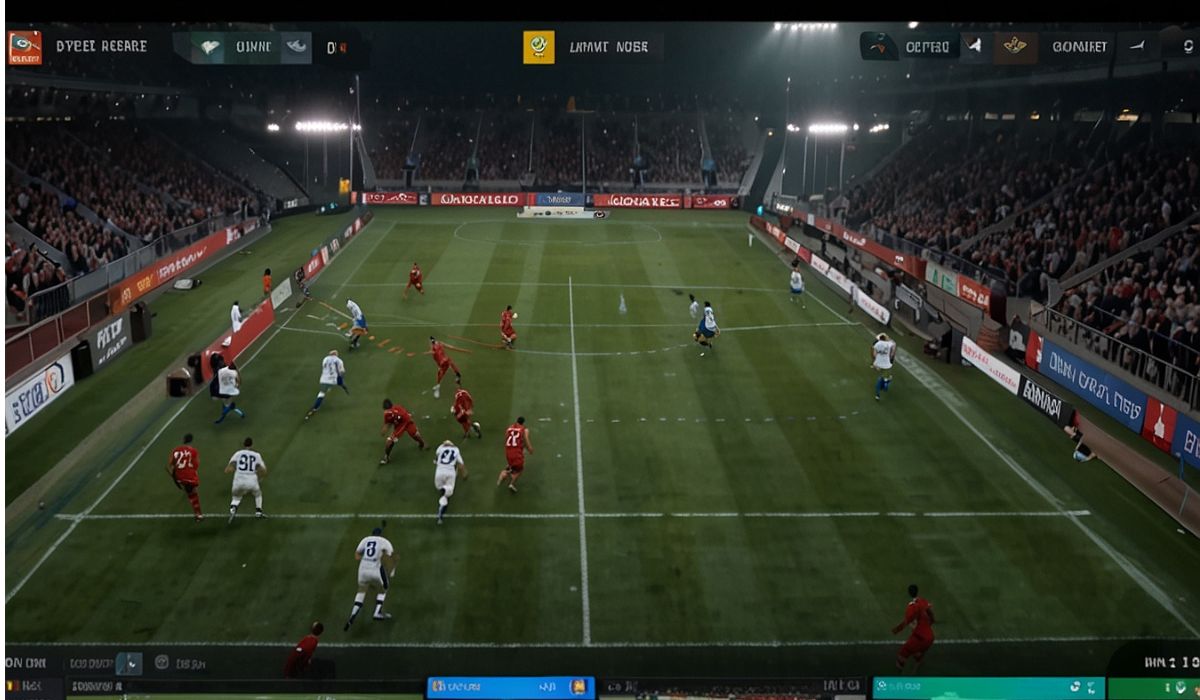Picture this: The gilded halls and manicured gardens of the Château de Versailles, a symbol of absolute monarchy and untouchable opulence. Now, imagine the thunder of hooves and the focused silence of intense competition echoing across its grounds. This September, Versailles won’t just host history; it will witness a breathtaking display of human spirit and equine partnership at the Equestrian Paralympics 2024. Forget the jumping and eventing you see at the Olympics; here, the sole discipline is para-dressage – a mesmerizing ballet of precision, trust, and sheer determination where horse and rider move as one. It’s not just sport; it’s poetry in motion, redefined.
Forget the three-ring circus of Olympic equestrian. The Paralympic stage narrows its focus intensely onto para-dressage. Why? Because this discipline, demanding harmony, subtle communication, and flawless execution, transcends physical limitations like no other. From September 3rd to 7th, the temporary arena nestled within Versailles’ historic embrace becomes the crucible where dreams are forged in the fires of competition. Think about that juxtaposition for a second: the ultimate symbol of exclusion transformed into a global platform celebrating inclusion and ability. Pretty powerful, right?
Here’s What We’ll Gallop Through:
- The Heart of the Matter: Para-Dressage Explained (No Jargon, Promise!)
- Grading the Field: Understanding the Five Classes (I-V) (It’s Not About Severity, It’s About Impact)
- The Triple Crown: Individual, Team & Freestyle Tests (What Makes Each Unique?)
- Judging the Dance: Precision, Quality & Artistry Under the Microscope
- Leveling the Arena: Adaptive Aids & Communication Magic (Voice Commands? Rein Bars? Oh Yes!)
- The Britannia Rule: Decoding Great Britain’s Para-Dressage Dominance (Spoiler: It’s Not Luck)
- Versailles: More Than Just a Pretty Backdrop (Why This Venue Resonates)
- FAQS
- Final Furlong: Why Paris 2024 Matters More Than Ever
The Heart of the Matter: Para-Dressage Explained
Let’s ditch the technical manuals. Imagine asking your horse to perform intricate movements – precise circles, smooth transitions, elegant halts – using the subtlest shifts in your weight, the gentlest squeeze of a leg, or maybe even just your voice. That’s para-dressage. It’s about creating an invisible conversation, a dialogue of trust and understanding between rider and horse, resulting in a performance that looks effortless. But trust me, having spent years around horses, effortless is the last word I’d use. It’s the culmination of thousands of hours of sweat, frustration, breakthroughs, and unwavering partnership. The Equestrian Paralympics 2024 is the pinnacle where that conversation becomes a world-class performance under immense pressure.
Grading the Field: Understanding the Five Classes (I-V)
“Wait,” you might ask, “how do they make it fair with such diverse impairments?” Brilliant question. Riders aren’t lumped together. They’re meticulously classified into five grades (I to V) based solely on how their impairment impacts their ability to ride a dressage test. It’s a functional assessment, not a medical diagnosis.
- Grade I: Riders here often have the most significant impairments affecting limbs and trunk, requiring a wheelchair in daily life. They typically perform walk-only tests. Their balance and core strength on a moving horse? Absolutely awe-inspiring.
- Grade II: Usually riders with significant trunk impairment and minimal leg function, or moderate impairment in all limbs. Tests are primarily walk, with some trot work permitted. The coordination required is immense.
- Grade III: Riders often have good balance but impairments in both legs and arms, or moderate impairment in all limbs. They compete in walk and trot, but no canter. Seeing the power generated primarily from the seat is incredible.
- Grade IV: Typically includes riders with impairment in one or two limbs or some degree of visual impairment. They perform walk, trot, and canter. The complexity ramps up significantly here.
- Grade V: Riders have the least impairment, perhaps a mild limb deficiency or reduced vision. They perform the same walk, trot, and canter tests as Grade IV, but often with more complex sequences. Don’t mistake “least impairment” for easy – the standard is fiercely high.
Key Point: A Grade I rider’s performance is judged just as rigorously within their grade’s requirements as a Grade V rider is within theirs. It’s about excellence within your functional capabilities. The classification system is the bedrock of fairness in Paralympic equestrian sport.
The Triple Crown: Individual, Team & Freestyle Tests
The equestrian paralympics 2024 program features three distinct types of competition, each demanding a unique skillset:
- Individual Championship Test: Think of this as the technical foundation. Riders perform a set pattern of movements (the “test”) specific to their grade. Every step, transition, and circle is predetermined. It’s about absolute accuracy and the purity of the horse’s gaits. Judges scrutinize every detail – the regularity of the rhythm, the suppleness, the connection between horse and rider. Nail-biting precision is the name of the game.
- Team Test: This is where national pride shines. Teams usually consist of three or four riders from different grades. Each rider performs a specific team test for their grade. The scores are then combined. Strategy comes into play – selecting the right combination of riders and grades to maximize the team’s potential score. It adds a fascinating layer of teamwork to an individual sport. Can Britain maintain its iron grip? Will the USA or the Netherlands mount a serious challenge? The team event often delivers the most dramatic moments.
- Freestyle Test (The Kür): This is where the magic truly happens and the crowd often goes wild. Set to music chosen by the rider, this is artistic expression unleashed. Riders design their own sequence of movements (within the boundaries of their grade’s difficulty level), creating a flowing, emotional performance. Precision still matters immensely, but it’s blended with choreography, musical interpretation, and sheer artistry. It’s the closest thing equestrian sport gets to a figure skating free skate. Seeing a rider and horse perfectly in sync with the music’s crescendo? Chills. Absolute chills.
Judging the Dance: Precision, Quality & Artistry Under the Microscope
So, how do they decide who wins? Forget simple stopwatches. Para-dressage judging is a complex, nuanced art form in itself. Judges (typically five for major championships) evaluate every movement based on three core pillars:
- Precision & Correctness: Did the rider perform the exact movement required, in the right place, at the designated marker? Was that circle perfectly round? Did the transition happen precisely at ‘C’? Accuracy is paramount, especially in the Championship tests.
- Quality of the Horse’s Movement (Gaits): This assesses the horse’s natural way of going – its rhythm, suppleness, engagement, and impulsion. Is the walk clear and marching? Is the trot active and elastic? Is the canter balanced and uphill? Even with adaptive aids, the horse must move freely and correctly.
- Rider’s Influence & Effectiveness (Including Artistry in Freestyle): How well is the rider guiding the horse? Is the communication subtle and almost invisible? Is the horse responsive, willing, and connected? In the Freestyle, this expands to include the choreography’s difficulty, harmony with the music, and overall artistic impression. Does the performance tell a story? Does it move you?
Judges score each movement on a scale from 0 (not performed) to 10 (excellent), with half marks allowed. Those scores are then combined and averaged. It’s meticulous, demanding, and absolutely critical to the sport’s integrity.
Leveling the Arena: Adaptive Aids & Communication Magic
Here’s something genuinely fascinating: equestrian paralympics 2024 riders may use specially approved adaptive equipment to compensate for their specific impairments and communicate effectively with their horse. This isn’t an advantage; it’s essential for creating a level playing field. Think of it as technological innovation meeting equestrian tradition.
- Rein Bars or Modified Reins: These connect both reins to a single handle, allowing riders with limited hand or arm function to steer and give rein aids effectively. Some use split reins with special grips.
- Voice Commands: Yes, you can talk to your horse! Riders with significant leg impairments often rely heavily on precise voice aids (specific words or sounds) to ask for transitions, turns, or changes in pace. The bond required for this to work is extraordinary.
- Whips & Spurs (Adapted): Modified whips might be longer or held with special straps. Spurs might have modified shanks or be worn on special boots. Usage is strictly regulated.
- Special Stirrups/Saddles: Safety and stability are crucial. Riders might use stirrups with heel guards, magnetic safety releases, or specialized saddles offering more support.
- Compensating Aids: Riders with specific asymmetries might be allowed to use a loop or strap on one side for balance, but never to actively influence the horse.
The Golden Rule: Any adaptive aid must be approved by the International Equestrian Federation (FEI) before competition and cannot provide an unfair advantage or substitute for the rider’s skill. It’s about enabling communication, not replacing horsemanship.
The Britannia Rule: Decoding Great Britain’s Para-Dressage Dominance
Let’s address the elephant – or rather, the very successful thoroughbred – in the room. Since para-dressage debuted at the Atlanta 1996 Paralympics, Great Britain has been utterly dominant. We’re talking a staggering 34 gold medals haul. That’s not just winning; that’s rewriting the record books. So, what’s their secret sauce? It’s not just one ingredient.
- Pioneering Investment & Structure: British Dressage and UK Sport invested early and heavily in a structured Paralympic pathway. They identified talent, provided funding, world-class coaching, sports science support, and crucially, access to top horses. They built a system.
- Culture of Excellence: Success breeds success. The presence of legends like Lee Pearson, Sophie Christiansen, Natasha Baker, and Sophie Wells created a benchmark. Newcomers enter a program expecting to win. The pressure is immense, but so is the support.
- Horse Power: Let’s be real, you need an exceptional horse. Britain has excelled in sourcing, developing, and matching the right horses to the right riders. These equine athletes are worth their weight in gold and are integral partners.
- Depth of Talent: They don’t rely on one superstar. Britain boasts incredible depth across multiple grades. If one rider has an off day, another is ready to step up, especially in the team event.
- Sheer Competitive Grit: Honestly? They know how to win when it counts. Time and again, they deliver under the spotlight of the Paralympics.
Can Anyone Stop Them in Paris? The Netherlands, Denmark, the USA, Germany, and Belgium are strong contenders with individual stars capable of gold. The Dutch team is particularly formidable. But dethroning the British squad, especially in the team event, remains the Everest of para-dressage. It’ll be one of the biggest stories of the equestrian paralympics 2024.
Paralympic Equestrian Medal Table Snapshot (Since 1996 – Selected Nations)
| Nation | Gold Medals | Silver Medals | Bronze Medals | Total Medals |
|---|---|---|---|---|
| Great Britain | 34 | 24 | 16 | 74 |
| Netherlands | 10 | 14 | 10 | 34 |
| Germany | 7 | 14 | 14 | 35 |
| USA | 5 | 9 | 9 | 23 |
| Denmark | 5 | 5 | 5 | 15 |
| Norway | 4 | 1 | 2 | 7 |
Versailles: More Than Just a Pretty Backdrop
Holding the para-dressage at the Château de Versailles for the equestrian paralympics 2024 is a masterstroke loaded with symbolism. On the surface, it’s a stunning, world-renowned location. But dig deeper:
- A Place of Exclusivity, Now Inclusive: Versailles was the epitome of restricted access, power reserved for the absolute few. Hosting the Paralympics here powerfully symbolizes breaking down barriers and opening elite spaces to all. It’s a potent statement about the place of para-athletes on the world stage.
- Equestrian Heritage: Horses were central to Versailles’ history – for transport, ceremony, and warfare. Using its grounds for a celebration of the horse-human bond, especially one focused on ability and partnership, creates a beautiful historical resonance.
- Logistical Showcase: Building a temporary, world-class equestrian arena within a UNESCO World Heritage site is no small feat. It demonstrates Paris 2024’s ambition and capability. Let’s hope the footing is perfect!
- Unforgettable Spectacle: For athletes and spectators alike, competing or watching amidst such grandeur will be an unparalleled experience. The backdrop will be as memorable as the performances. It elevates the entire event.
It’s more than a venue; it’s a narrative choice amplifying the themes of the Paralympic movement itself.
FAQS
- Q: Why is there only dressage in the Paralympics, not jumping or eventing?
A: Primarily for safety and feasibility. Para-dressage allows for precise classification based on functional ability and focuses on control and harmony, achievable across a wide spectrum of impairments. Jumping and eventing present significantly higher physical risks and classification complexities for para-athletes. Dressage showcases the core partnership most effectively. - Q: How do riders qualify their horses for the Paralympics?
A: It’s a rigorous process! Horses must meet strict veterinary and fitness standards. Riders and horses compete internationally to earn Minimum Eligibility Requirements (MERs) at specific FEI events in the year leading up. The horse must also be nominated by their country’s federation and pass final vet checks in Paris. It’s about proving consistent, high-level performance as a combination. - Q: Can any breed of horse compete?
A: Absolutely! While Warmbloods (like Dutch Harness Horses, Hanoverians, KWPN) dominate due to their trainability, movement, and temperament for dressage, you’ll see other breeds too. The key is finding a horse with the right mind, trainability, gaits, and suitability for the specific rider’s needs and classification. Temperament is king. - Q: Are the rules different from Olympic dressage?
A: The core principles of dressage are identical. However, the tests are specifically designed for each Paralympic grade (I-V), focusing on movements achievable within those functional parameters. The allowance of approved adaptive aids is the most significant rule difference. Judging criteria (precision, gaits, rider influence) remain fundamentally the same. - Q: How can I watch the Equestrian Paralympics 2024?
A: Check your local Paralympic broadcaster! Major networks like NBC (USA), Channel 4 (UK), CBC (Canada), and others hold rights. Extensive coverage is also expected on the official Paralympic Games website (paris2024.org) and IPC YouTube channel. Streaming services may offer packages. Bookmark schedules early! - Q: Who are some riders to watch in Paris?
A: Beyond the British powerhouses (Pearson, Baker, etc.), watch out for: Roxanne Trunnell (USA) – Grade I powerhouse, Sanne Voets (NED) – Grade IV star, Michele George (BEL) – Grade V contender, Tobias Thorning Jørgensen (DEN) – Grade III talent. Expect fierce competition across all grades!
Final Furlong: Why Paris 2024 Matters More Than Ever
The equestrian paralympics 2024 at Versailles isn’t just another championship. It feels like a pivotal moment. Against a backdrop dripping with history, these athletes will redefine grace, strength, and partnership. They’ll showcase not just sporting excellence, but the profound ability of the human spirit to connect, adapt, and triumph.
Great Britain will aim to defend its dynasty, but the chasing pack has never been stronger or hungrier. The innovative adaptive aids highlight how sport constantly evolves to become more inclusive. And Versailles… well, Versailles transforms from a relic of exclusion into a vibrant symbol of what’s possible when barriers fall.
Having followed this sport for years, I’m convinced the most powerful moments won’t necessarily be the medal ceremonies, but those fleeting seconds of pure harmony – when horse and rider move as a single, confident entity, seemingly oblivious to any impairment. That’s the magic of para-dressage. That’s the enduring image Paris 2024 promises to deliver.
So, mark your calendars: September 3rd-7th. Tune in. Witness the precision, feel the artistry, and be inspired by the sheer grit. Will you be watching when history is made, not just in the palace gardens, but within the arena of possibility?
READ ALSO: The Ultimate Guide to 2025 Artistic Gymnastics Olympics Tickets & Your Olympic Dream Journey










